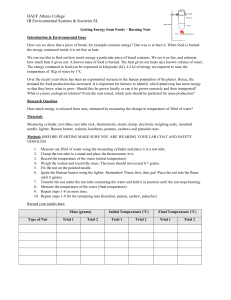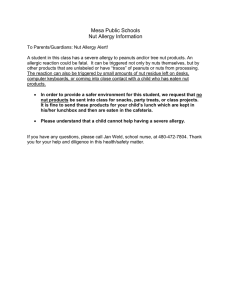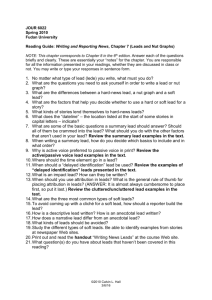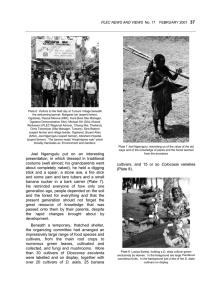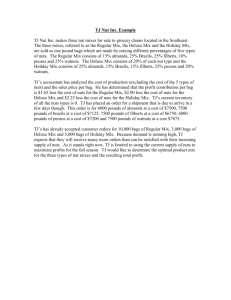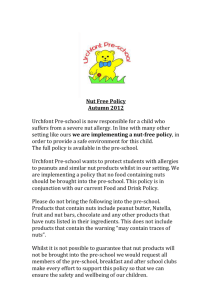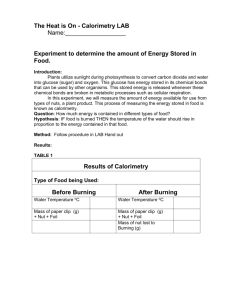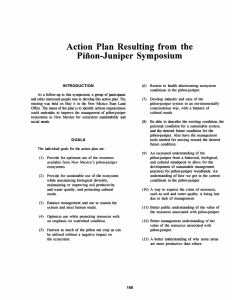Abstract JSFA
advertisement
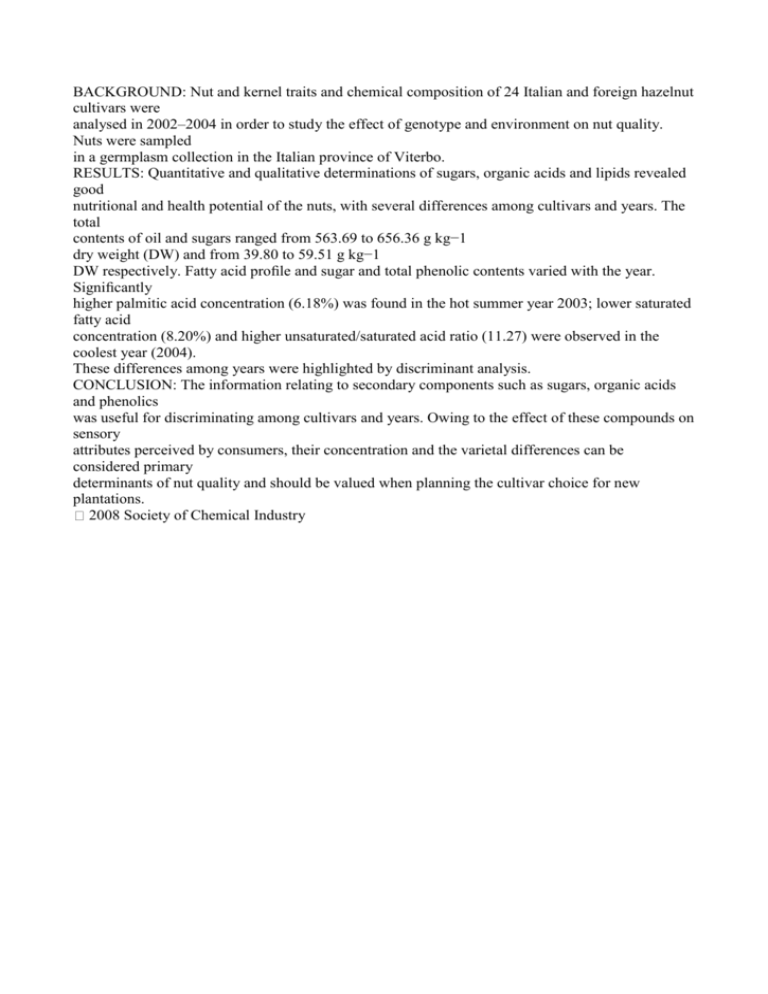
BACKGROUND: Nut and kernel traits and chemical composition of 24 Italian and foreign hazelnut cultivars were analysed in 2002–2004 in order to study the effect of genotype and environment on nut quality. Nuts were sampled in a germplasm collection in the Italian province of Viterbo. RESULTS: Quantitative and qualitative determinations of sugars, organic acids and lipids revealed good nutritional and health potential of the nuts, with several differences among cultivars and years. The total contents of oil and sugars ranged from 563.69 to 656.36 g kg−1 dry weight (DW) and from 39.80 to 59.51 g kg−1 DW respectively. Fatty acid profile and sugar and total phenolic contents varied with the year. Significantly higher palmitic acid concentration (6.18%) was found in the hot summer year 2003; lower saturated fatty acid concentration (8.20%) and higher unsaturated/saturated acid ratio (11.27) were observed in the coolest year (2004). These differences among years were highlighted by discriminant analysis. CONCLUSION: The information relating to secondary components such as sugars, organic acids and phenolics was useful for discriminating among cultivars and years. Owing to the effect of these compounds on sensory attributes perceived by consumers, their concentration and the varietal differences can be considered primary determinants of nut quality and should be valued when planning the cultivar choice for new plantations. 2008 Society of Chemical Industry
